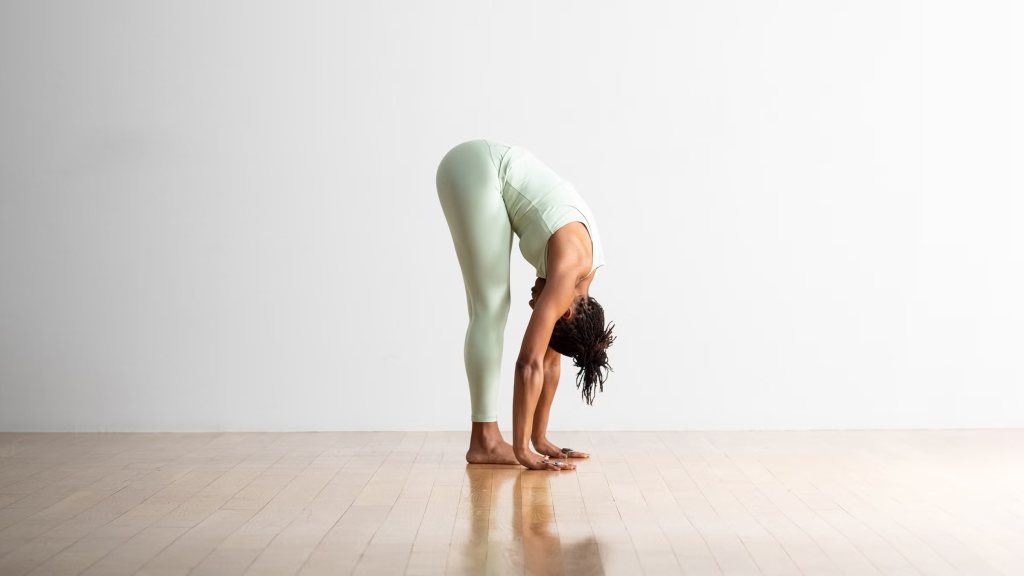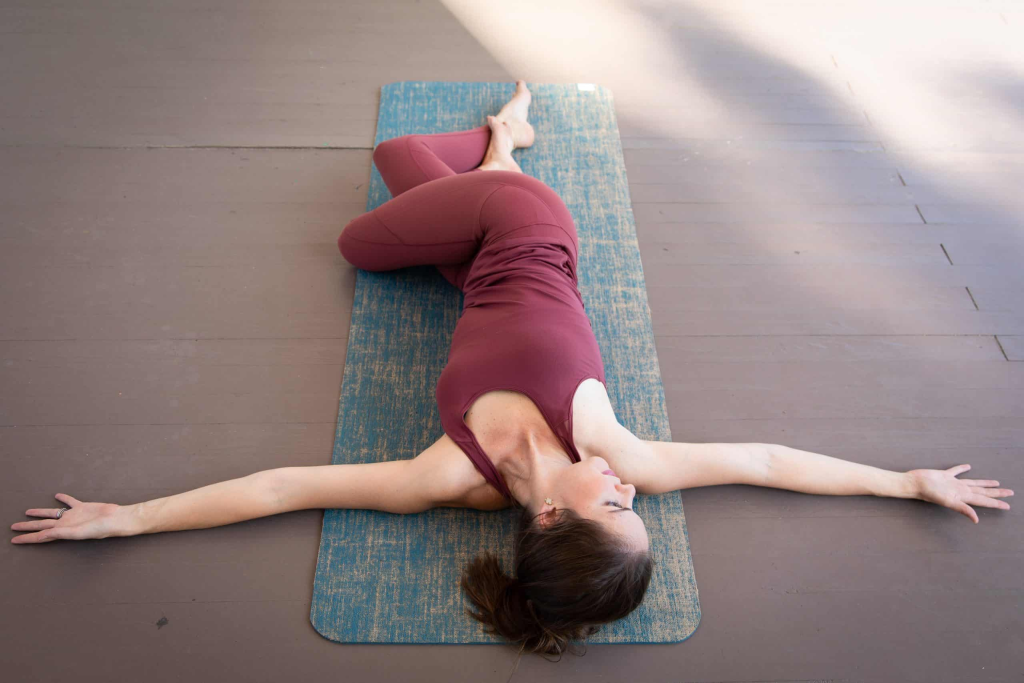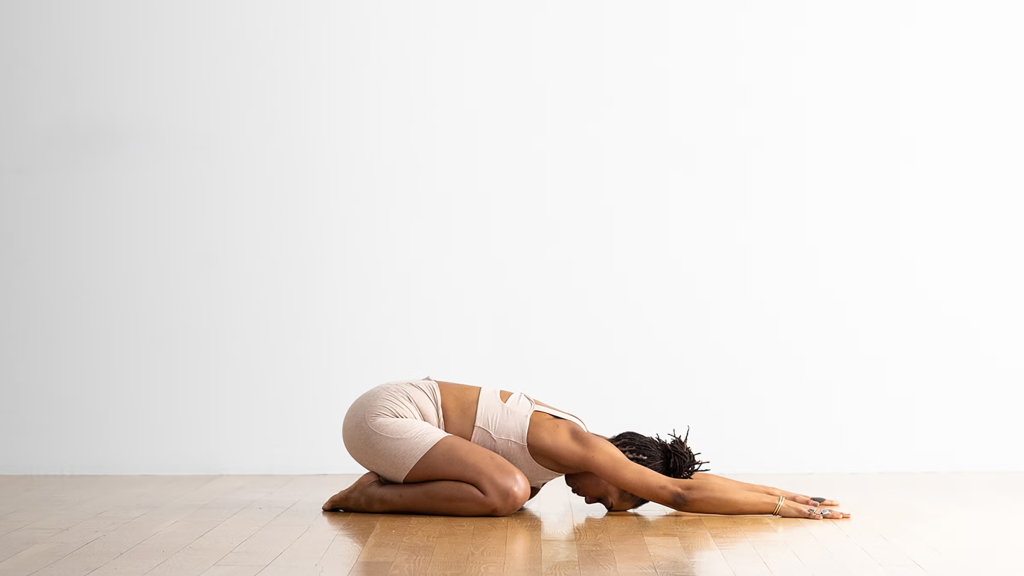Ever tossed and turned for hours, staring at the ceiling, wondering why sleep feels like an elusive luxury? Here’s the truth: the secret to deeper, more restorative sleep might not be a new mattress or blackout curtains—it could be a simple, gentle bedtime workout.
Yes, you read that right. Moving your body before bed can help you sleep better.
While most of us associate exercise with sweating it out at the gym, research suggests that low-intensity movements done before bedtime can significantly improve sleep quality, reduce stress, and help you wake up refreshed. In fact, light exercise 1–2 hours before sleep helps regulate your circadian rhythm, calm the nervous system, and prepare your mind for rest.
Let’s dive into the science, the myths, and an effective bedtime routine you can start tonight.

What Happens After 30 Days of a Bedtime Exercise Routine?
| Benefit | Description |
|---|---|
| Improved Sleep Quality | Deeper, uninterrupted sleep becomes more consistent and refreshing. |
| Faster Sleep Onset | Falling asleep becomes quicker due to reduced mental and physical tension. |
| Reduced Stress & Anxiety | Calming movements help regulate cortisol levels and quiet the nervous system. |
| Enhanced Flexibility | Daily stretching improves joint mobility and reduces stiffness. |
| Fewer Nighttime Awakenings | A calmer nervous system means fewer disruptions during the night. |
| Decreased Muscle Tension | Gentle movement releases tension in the back, neck, and legs. |
| Improved Mood | Better rest leads to more balanced moods and emotional resilience. |
| Lower Resting Heart Rate | Breathing exercises help train the body to stay in a restful state. |
| Increased Body Awareness | A nightly routine fosters mindfulness and connection to physical sensations. |
| Healthier Sleep Habits | Creating a ritual builds discipline and anchors a consistent sleep schedule. |
Do You Know?
Contrary to popular belief, not all exercise before bed disrupts sleep. While intense workouts too close to bedtime may rev up your nervous system, light stretching, yoga, or breathing exercises do the opposite: they tell your body it’s time to wind down.
Why Bedtime Exercise Works
A bedtime routine does more than prepare your skin with skincare or your mind with a book. A short series of mindful exercises can:
- Reduce cortisol levels (the stress hormone)
- Loosen tight muscles that may cause discomfort while sleeping
- Promote melatonin release, the hormone responsible for sleepiness
- Regulate your breathing and heart rate, leading to a calmer mind
Myth Busted:
Myth: “Exercising before bed will keep you awake all night.”
Truth: Light, intentional movement can improve sleep—just avoid high-impact cardio or heavy weightlifting 1–2 hours before bedtime.
The Ideal Bedtime Exercise Routine (10–15 Minutes)
This routine is designed to release physical tension, promote relaxation, and ease your body into sleep mode.
1. Forward Fold with Deep Breathing (2 minutes)

- How to do it: Stand tall, slowly fold forward from your hips, let your arms hang, and breathe deeply.
- Why it helps: Calms the nervous system and gently stretches the back.
2. Legs-Up-The-Wall Pose (3 minutes)

- How to do it: Lie on your back, scoot your hips to the wall, and extend your legs upward.
- Why it helps: Promotes circulation, eases tired legs, and slows the heart rate.
3. Supine Spinal Twist (1–2 minutes per side)

- How to do it: Lie on your back, pull one knee to your chest and gently twist it across your body.
- Why it helps: Releases back tension and enhances spinal mobility.
4. Child’s Pose (2 minutes)

- How to do it: Kneel on the floor, sit back on your heels, and stretch your arms forward on the floor.
- Why it helps: Calms the brain and stretches the lower back.
5. Diaphragmatic Breathing (3–5 minutes)

- How to do it: Lie on your back with one hand on your belly. Inhale deeply through your nose, expanding your belly, then exhale slowly.
- Why it helps: Activates the parasympathetic nervous system, preparing the body for rest.
Interesting Fact:
Studies show that people who perform mindfulness-based movement (like yoga or stretching) before sleep report 30% better sleep quality compared to those who don’t. That’s equivalent to the effects of some over-the-counter sleep aids—without the side effects.
Who Should Try Bedtime Exercise?
This routine is especially beneficial for:
- People with high stress or anxiety
- Those who sit all day (desk jobs)
- Individuals with restless sleep patterns
- Light sleepers who wake frequently at night
Tips to Enhance the Experience
- Set the mood: Dim the lights, play soft music, or use essential oils like lavender or chamomile.
- Avoid screens: Do your bedtime routine away from phones and TVs to minimize blue light.
- Be consistent: Repeating the same routine nightly signals your brain it’s time to sleep.
Final Thought: A Small Change, A Big Impact
In a world where we often chase better sleep with melatonin supplements, herbal teas, or white noise machines, a simple bedtime exercise routine is often overlooked—but powerfully effective. You don’t need to be a yogi or a fitness guru. You just need a few minutes, a quiet space, and a commitment to your well-being.
So tonight, instead of scrolling on your phone in bed, try a few calming movements.
Your body will relax, your mind will quiet down, and your sleep will thank you.
Frequently Asked Questions (FAQs)
Can exercising before bed really help me sleep better?
Yes, gentle, low-impact exercises like stretching, yoga, or breathing techniques can relax your muscles, reduce stress hormones, and signal your brain that it’s time to rest. These movements promote better sleep quality when done 30–90 minutes before bed.
What kind of exercises should I avoid before sleeping?
Avoid high-intensity workouts like running, heavy weightlifting, or vigorous cardio right before bed. These can raise your heart rate, increase adrenaline, and interfere with your body’s natural wind-down process.
How long should a bedtime exercise routine be?
A good routine should last between 10 to 20 minutes. It doesn’t have to be intense—just consistent and relaxing. Think of it as a physical meditation rather than a workout.
Is it okay to stretch in bed?
Absolutely! Gentle stretches in bed—like knee-to-chest pulls or spinal twists—are effective for releasing tension and easing your body into sleep. They’re especially helpful for people with limited mobility.
When is the best time to do bedtime exercises?
The ideal time is about 30 to 60 minutes before sleep. This gives your body a chance to cool down and fully relax after the movement, which aligns with the natural melatonin release cycle.
Do bedtime exercises help with insomnia?
Yes, for many people. Bedtime exercise routines can reduce anxiety, quiet a racing mind, and promote physical relaxation—all common barriers to falling asleep. While not a cure for chronic insomnia, they are a proven natural aid.
Can bedtime workouts help with back pain or stiffness?
Definitely. Many people suffer from tight hips, stiff spines, or neck pain after a long day. Gentle stretches and poses like Child’s Pose or Supine Twist can alleviate pain and help you sleep more comfortably.
How soon can I expect to see results?
Many people report better sleep after just a few nights of consistent bedtime movement. For long-term benefits, try practicing the routine nightly for at least a week or two.





